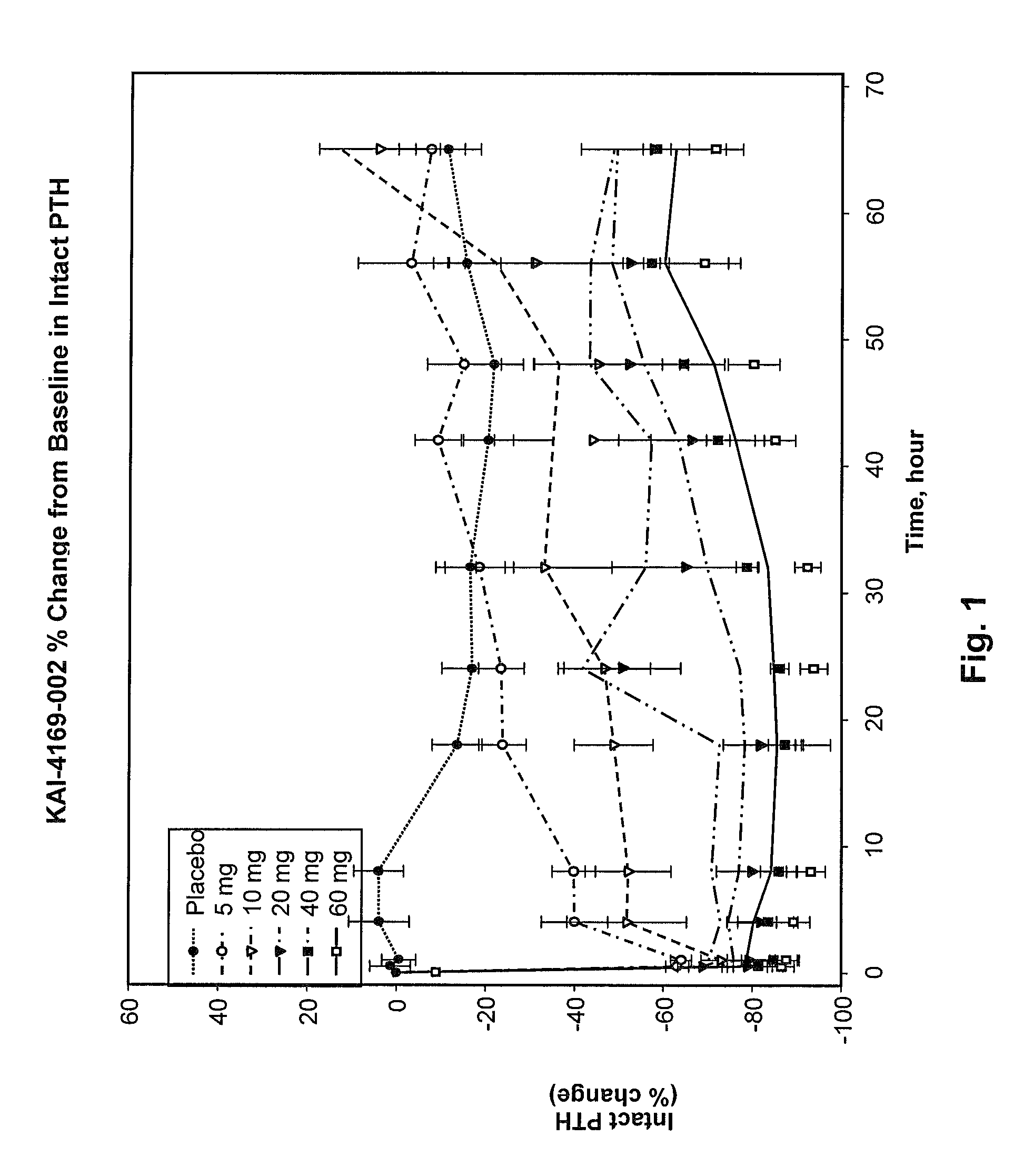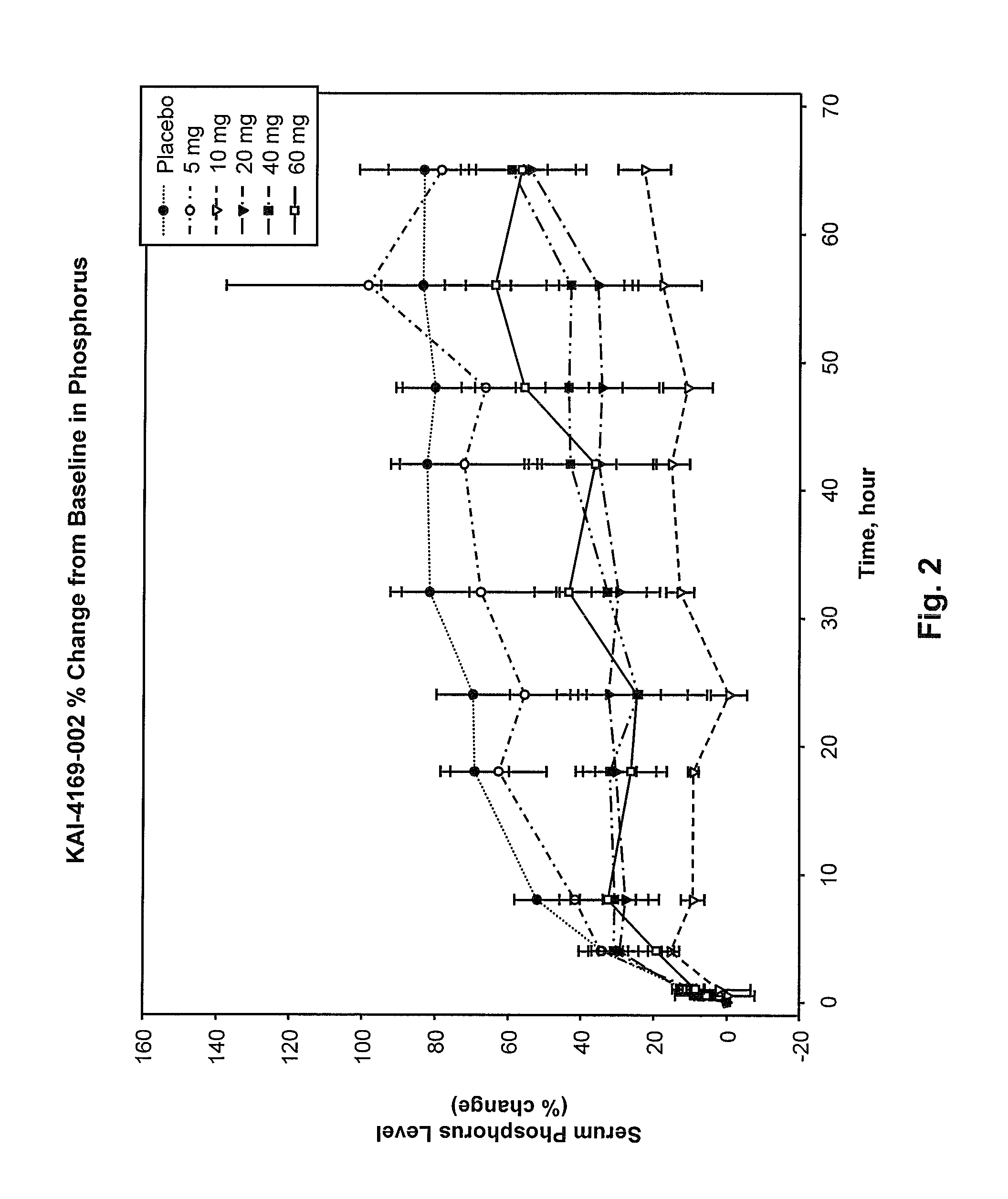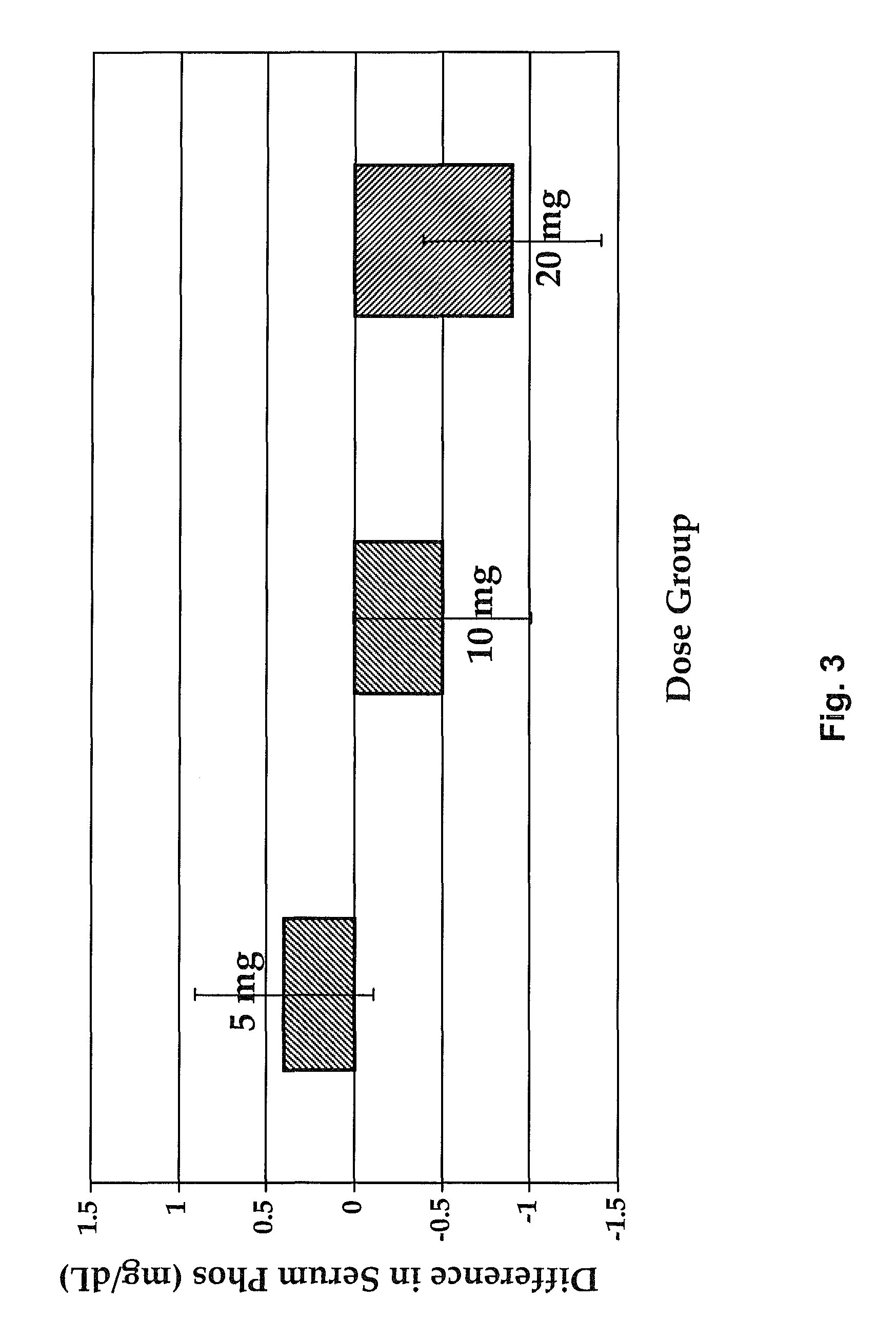Therapeutic agents for regulating serum phosphorus
a serum phosphorus and therapy agent technology, applied in the direction of metabolism disorder, extracellular fluid disorder, peptide/protein ingredient, etc., can solve the problems of high-turnover bone disease, insufficient reduction of serum phosphorus levels, and inability to adequately handl
- Summary
- Abstract
- Description
- Claims
- Application Information
AI Technical Summary
Benefits of technology
Problems solved by technology
Method used
Image
Examples
example 1
[0137]An initial Phase 1 randomized, double-blind, placebo-controlled, single-dose, dose-escalation, two-period crossover study in ESRD patients on hemodialysis with SHPT was carried out. The study was conducted in part to assess the safety, tolerability, pharmacokinetics and pharmacodynamics of intravenous (IV) administration of SEQ ID NO:3 in healthy male volunteers and to inform dose selection for this protocol. This study was a Phase 1b study in hemodialysis subjects with SHPT.
[0138]Twenty-eight patients on hemodialysis were given a single dose of SEQ ID NO:3 or placebo. Cohorts receiving a 5, 10 or 20 mg dose were studied in a 2-period cross-over design while subjects receiving a 40 or 60 mg dose were randomized to SEQ ID NO:3 or placebo with 8 subjects per cohort.
[0139]Immediately following hemodialysis, subjects were admitted to a Phase 1 Unit and observed for 3 days. Baseline laboratory testing was performed 2 hours post hemodialysis. Following injection of SEQ ID NO:3 post ...
example 2
[0141]A Phase 2 study was completed as a double-blind, randomized placebo-controlled, multiple ascending dose study. This study was a single arm, open-label, 12-week, dose titration study with a 4-week follow-up phase to investigate the effect of SEQ ID NO:3 in the treatment of SHPT in hemodialysis subjects with chronic kidney disease-mineral and bone disorder (CKD-MBD). The primary objective of this study was to evaluate the effect of thrice-weekly IV administration of SEQ ID NO:3 in the treatment of SHPT in hemodialysis subjects with CKD-MBD as assessed by percent change in iPTH from baseline during the efficacy period. In addition, secondary objectives were to evaluate the change from baseline in serum cCa (corrected calcium) and phosphorus.
[0142]The starting dose of SEQ ID NO:3 was 5 mg. The dose of SEQ ID NO:3 was titrated to target 150≦300 pg / mL. Subjects were evaluated for an increase in the SEQ ID NO:3 dose during Week 5 and Week 9. If the subject's most recent cCa was ≧8.0 ...
PUM
| Property | Measurement | Unit |
|---|---|---|
| time | aaaaa | aaaaa |
| time | aaaaa | aaaaa |
| time | aaaaa | aaaaa |
Abstract
Description
Claims
Application Information
 Login to View More
Login to View More - R&D
- Intellectual Property
- Life Sciences
- Materials
- Tech Scout
- Unparalleled Data Quality
- Higher Quality Content
- 60% Fewer Hallucinations
Browse by: Latest US Patents, China's latest patents, Technical Efficacy Thesaurus, Application Domain, Technology Topic, Popular Technical Reports.
© 2025 PatSnap. All rights reserved.Legal|Privacy policy|Modern Slavery Act Transparency Statement|Sitemap|About US| Contact US: help@patsnap.com



